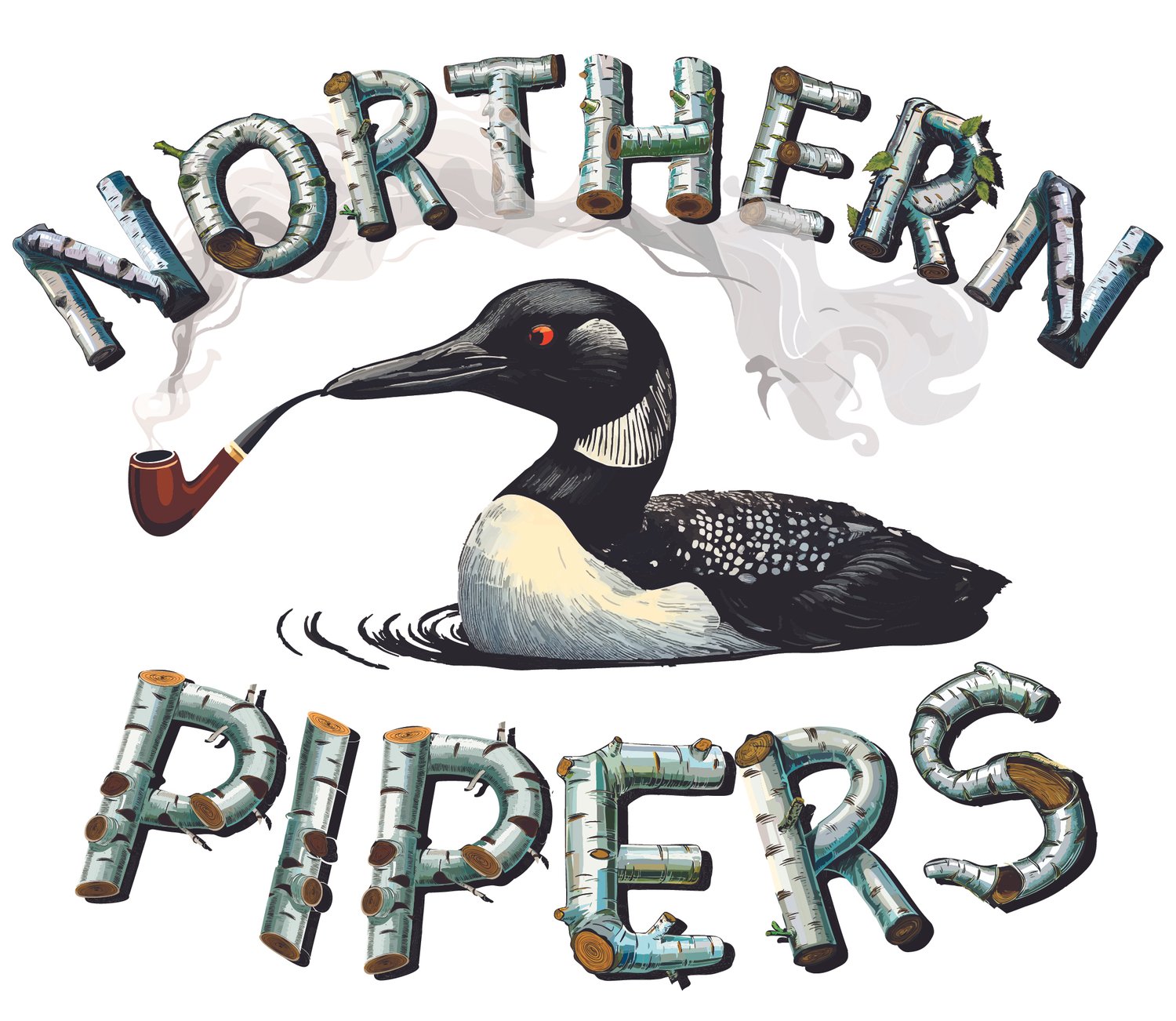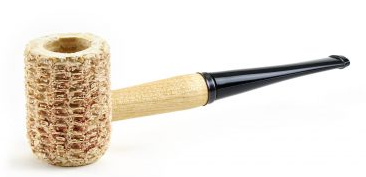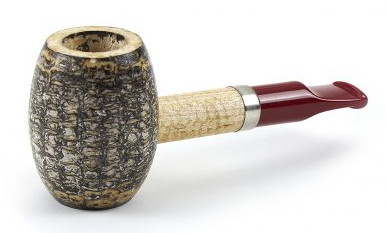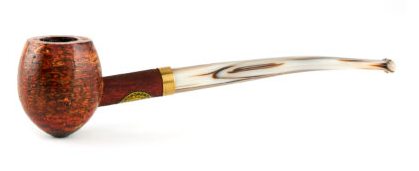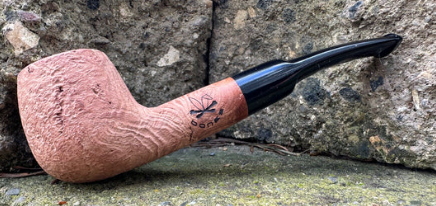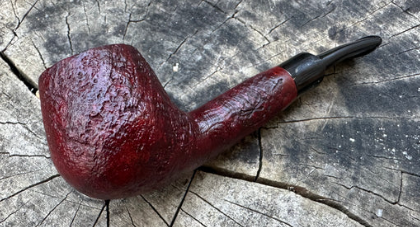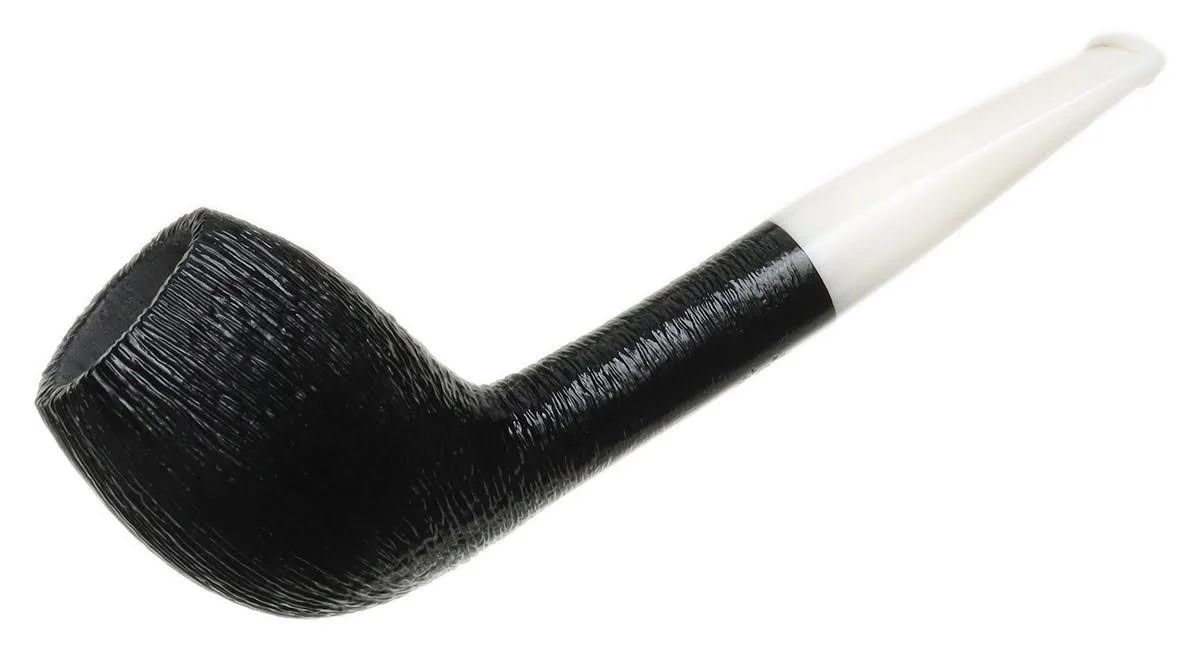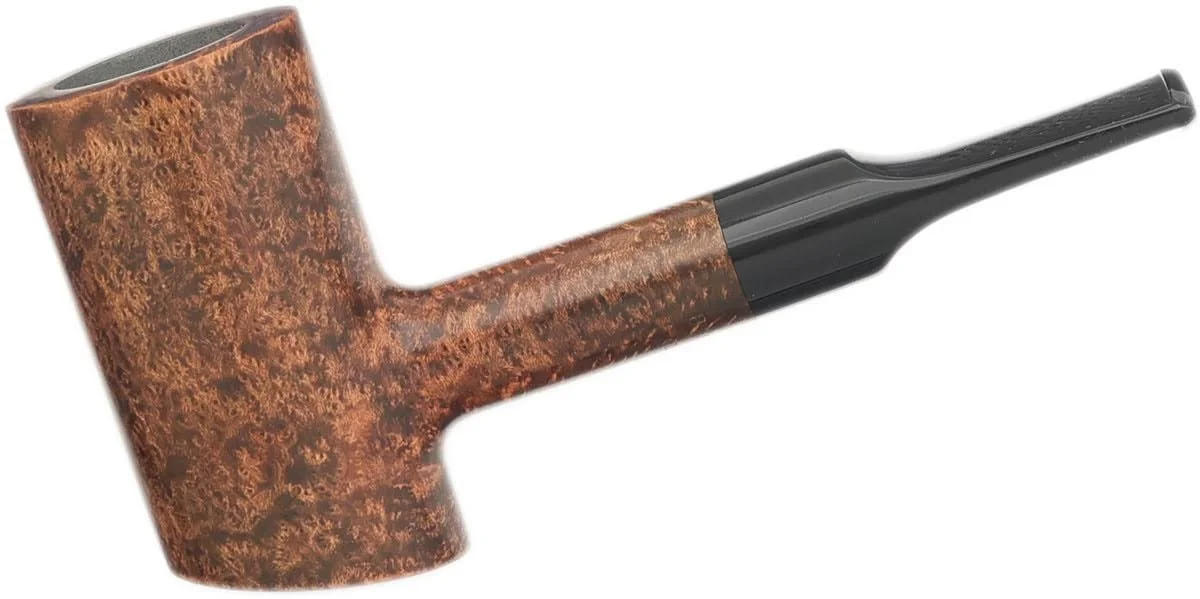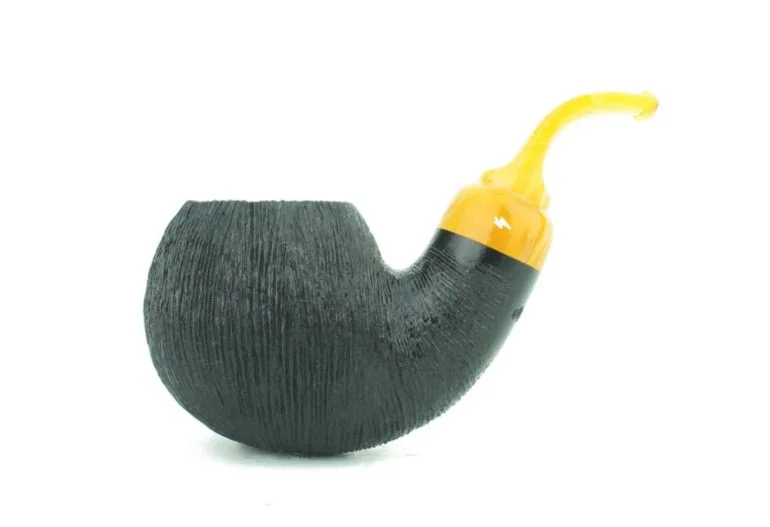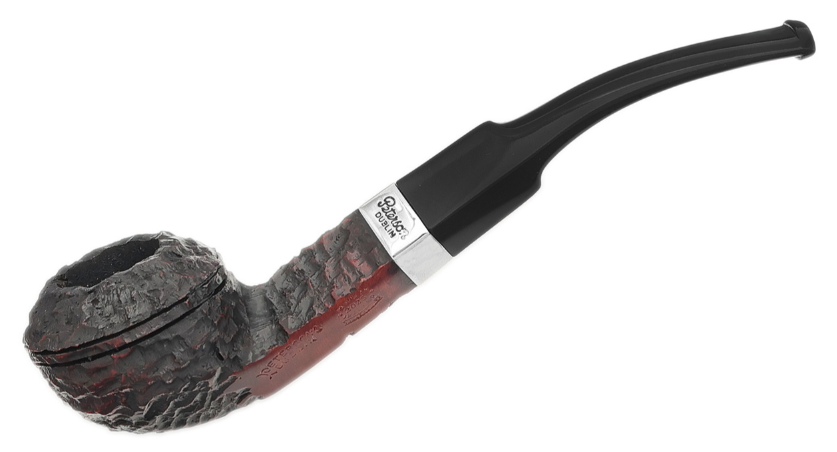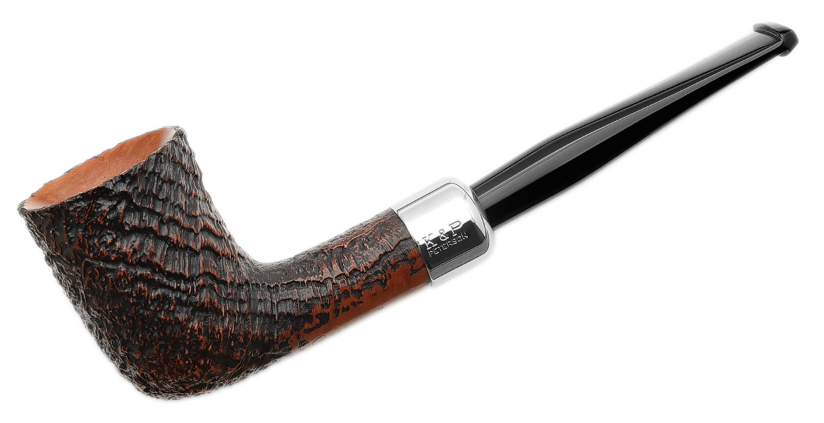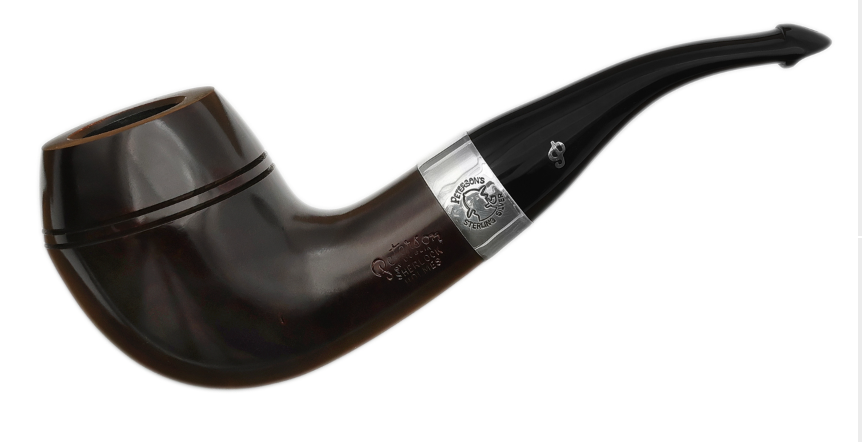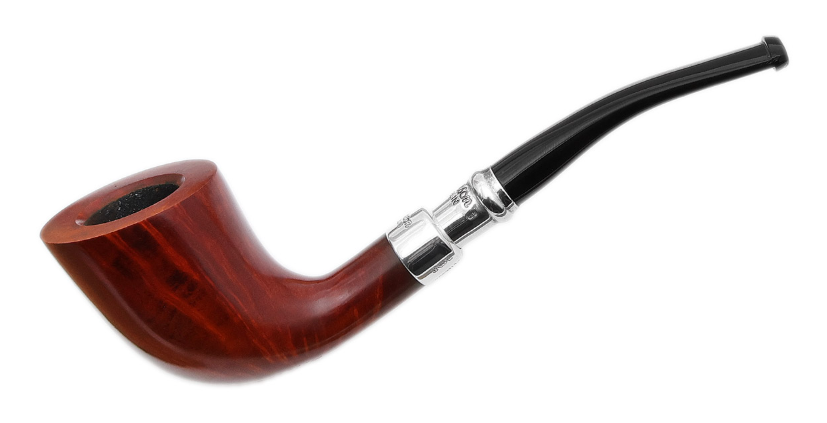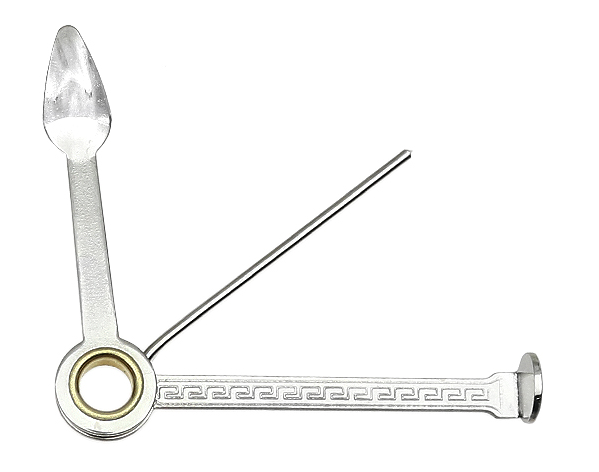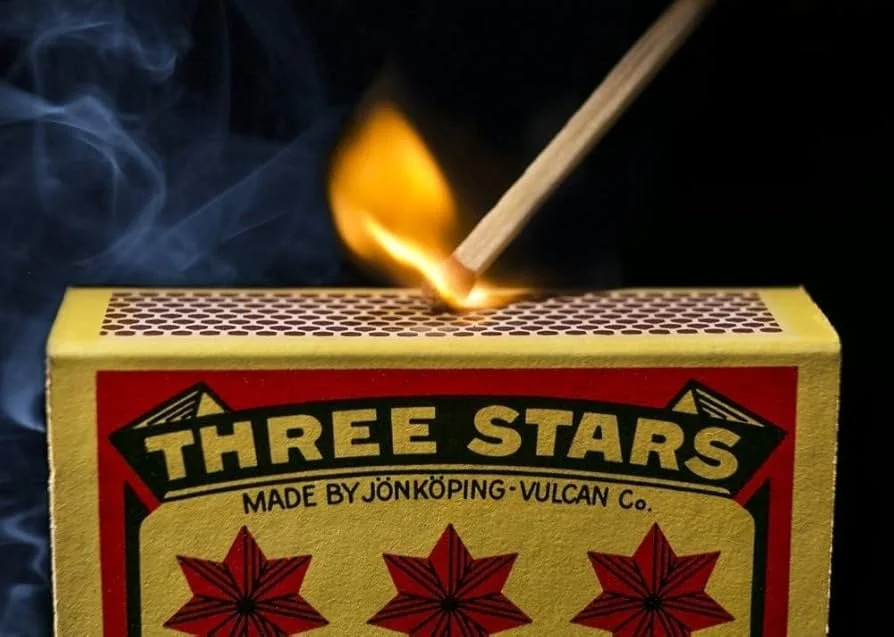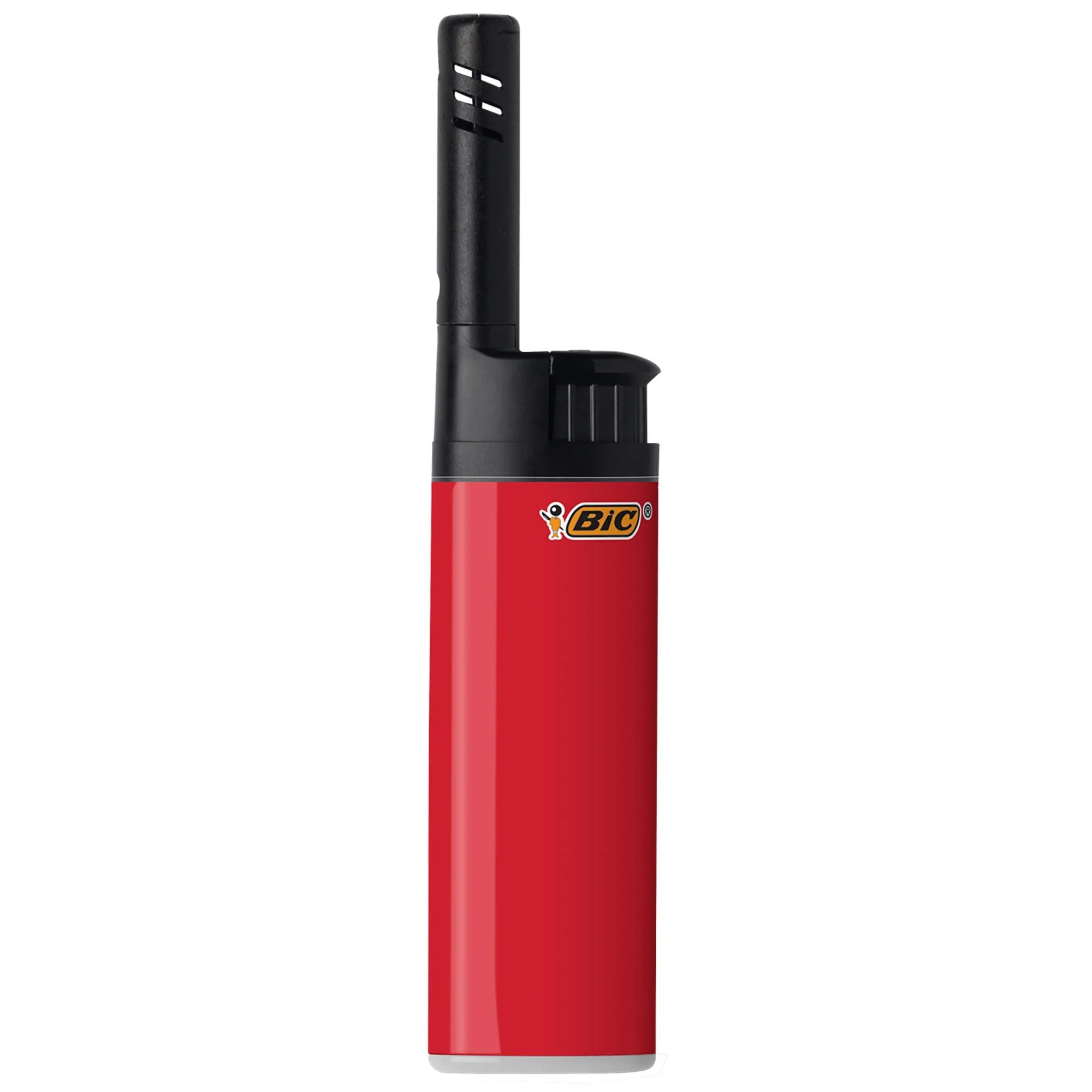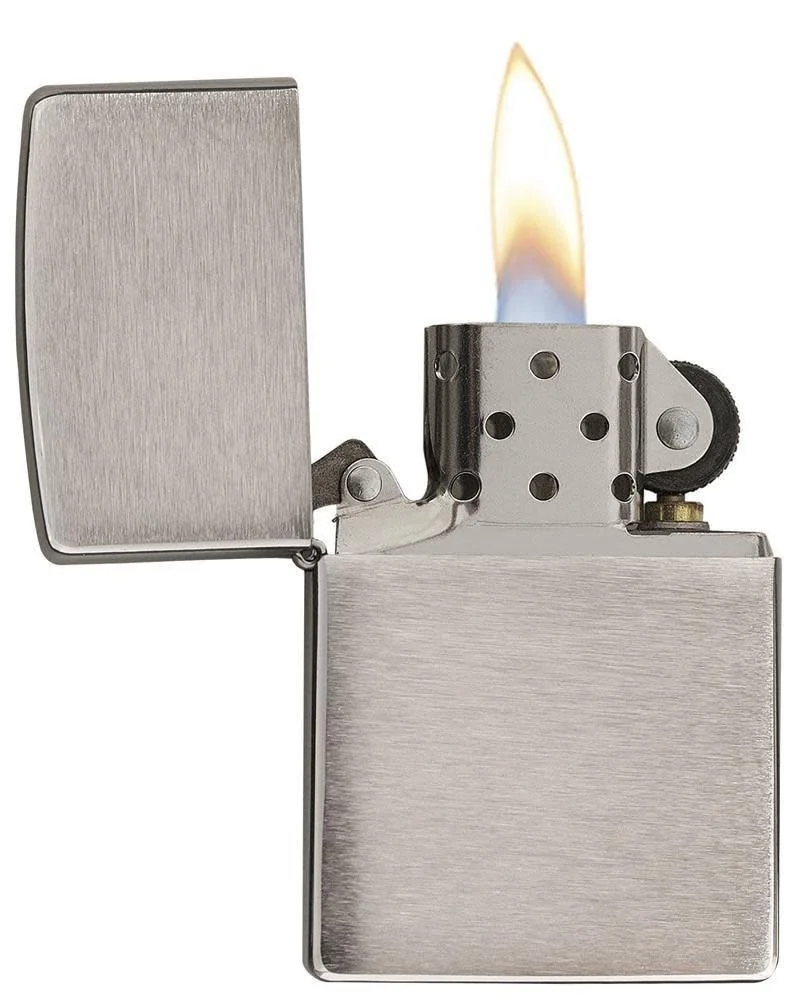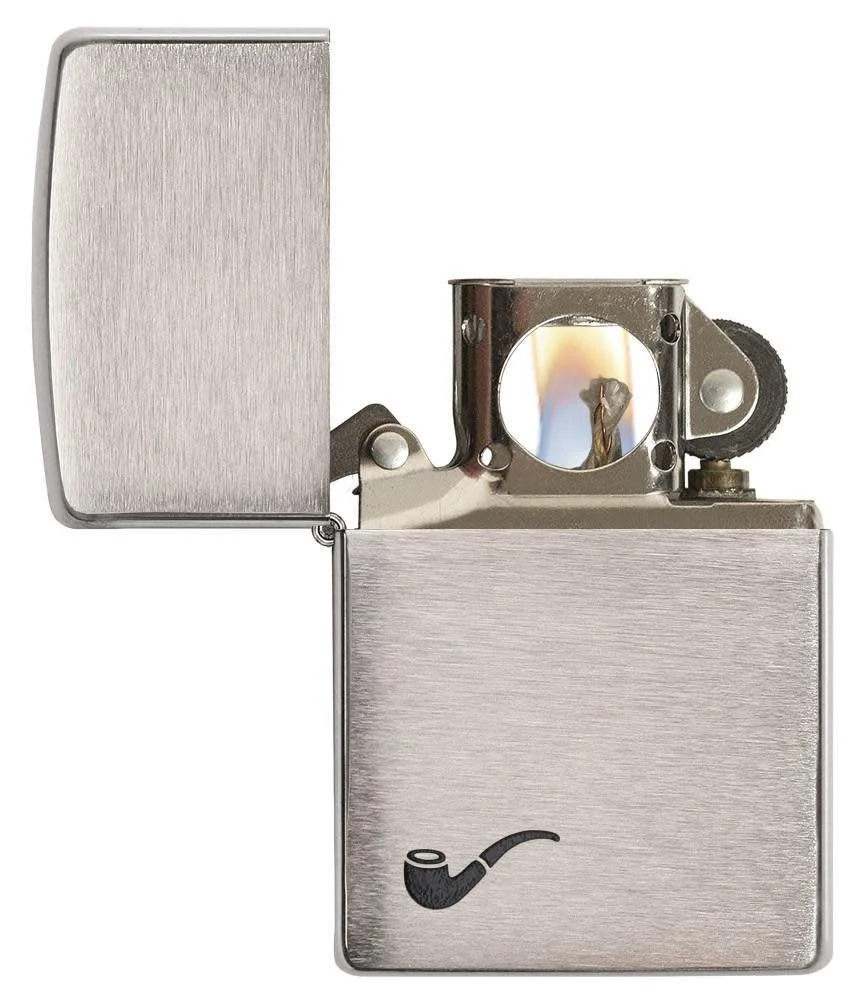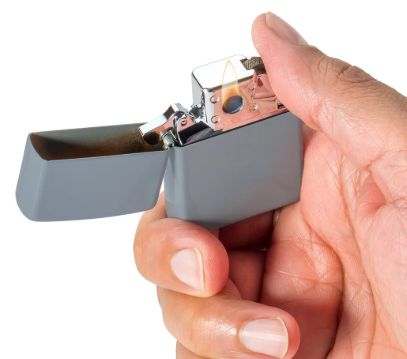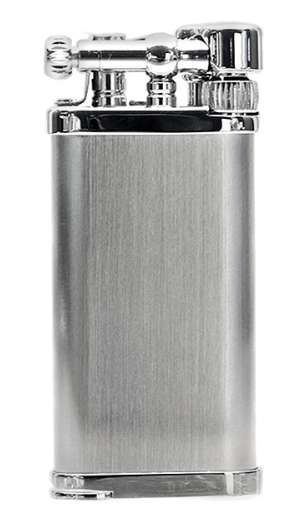Getting Started
I have tried to keep this section as jargon free as possible. But there is some vocabulary that is unavoidable. Please don’t forget to check out the Glossary page if there is anything you come across that gives you trouble.
It Starts with a Pipe…
You’re Going to Need One
So you’d like to try pipe smoking, but you aren’t sure where to start. You can start with us. We are happy to help brand new pipe smokers learn the ropes. In fact, if you come to one of our meetings and get started there for the first time, we will provide everything you need (choice of tobacco, a pipe tool, pipe cleaners, fire) except the pipe.
If you keep reading, we will point you toward a couple of places you can order your first pipe. We don’t provide the pipe for a couple of reasons. First, it’s nice to know that you’re at least interested enough in pipe smoking to have taken the small, and if you so choose, very inexpensive, step of ordering a pipe for yourself. Second, there is room here, for personal choice and preferences. Keep in mind, there is absolutely nothing wrong with being a pipe smoker who owns one pipe. So this pipe you buy could be the same pipe you smoke for the next decade.
Brian Levine, the host of the long-running Pipes Magazine Radio Show podcast, once made the comparison between a first pipe and student instruments. I’m paraphrasing, but he said that the problem with many student instruments is that they are not well made and so have problems like going out of tune quickly. So you’re taking people who are trying to learn how to do something complicated for the first time and saddling them with a tool that even someone with years of experience would probably find frustrating and struggle to use to produce something great.
There are a lot of moving parts to smoking a pipe. Its funny because, unlike learning an instrument, it doesn’t take long before much of it starts to become second nature, and you’re doing it by muscle memory, but at first, it can feel overwhelming and like you’re never going to get it “right.” In those early days, it is easy to apply improper technique to smoking a pipe and end up frustrated or running into issues like tongue bite. So the last thing you need is a pipe that is improperly constructed or poorly engineered, that is never going to smoke well, no matter how experienced the smoker, making things worse.
I would also caution you about picking up a used pipe from an antique shop, or using a pipe you got that belonged to, and was smoked by, a friend or relative. Those kinds of pipes, which we call estate pipes, can be fantastic pipes…if they have been properly cleaned and, if necessary, restored.
Let me provide an analogy. Many fans of estate pipes will say to those who might balk at the idea of putting a used pipe in their mouth, when you go out to eat in a restaurant, you aren’t getting brand new silverware and plates. That is completely true; you are essentially putting an estate fork and spoon in your mouth when you go out. It is also true that (one hopes) the silverware and plates have been washed and sanitized before being put back out for you. You would not (I hope) dream of going back into the kitchen, grabbing a dirty plate and silverware from the dish washer’s station, and carry it over to the line and ask the chef to plop your dinner on it.
Smoking an estate pipe that hasn’t been properly cleaned is quite similar. I want to emphasize the word “properly” in that sentence. I have been smoking pipes for over two decades. If I picked up an uncleaned estate pipe, I would not do the cleaning myself. There is more to it than wiping it down, and there are people who have been doing pipe cleaning and restoration for a long time, are quite good at it, and don’t charge a lot of money to do it. You may decide someday that you want to try it yourself, and that’s great. But I personally don’t recommend you try to learn to clean and restore pipes before, or while, you learn to smoke one. Do yourself a favor, get a new pipe when you’re first starting out, and if you insist on starting with an estate, either make sure it is properly cleaned, or be prepared for unexpected perks, like getting to taste the last guy’s favorite blend.
Size Matters…Sort of
If you do end up shopping for a new pipe online, pay attention to the measurements. It can be very hard when looking at pictures, even on sites like smokingpipes.com which take pictures of each individual pipe they sell, so the one you see online is the one you’ll get, to get a sense of how big it is. You really don’t want a super large pipe to get started with, for a number of reasons. Your best bet is to pick a pipe with a sort of mid-range size. A rough rule of thumb would be to look for a chamber or bowl diameter as close 3/4” (18-19mm) as possible, and a depth between 1” and 1.5” at the most. Even this, especially if the depth is at the 1.5” end, is likely to be more than you want to smoke at first. If nothing else, it will probably just take you too much time when you’re getting started, and it will feel like you’ll never get to the bottom of it. When you’re looking at the pipe’s measurements, be sure you’re looking at the bowl or chamber (the hole the tobacco goes into) dimensions, not the pipe’s overall dimensions. With this mid-range size, you can choose to not fill it all the way if you want a quicker smoke, so it’s good to have that option. You can’t do the same thing if you buy a tiny pipe and want a longer smoke, and going too far the other way, with a very large pipe, presents another set of challenges.
The other thing I will say about size is that even though a lot of people are drawn toward churchwarden pipes, those long, gracefully arcing pipes, thanks in large part to the Lord of the Rings, I strongly, strongly advise that you not go with a pipe like that when you’re starting. I’m not saying there is anything wrong with them, but they can pose some unique challenges to smoke, and add a layer of complication a new pipe smoker, most of the time, does not need. Wait until you’re getting comfortable with the basic mechanics, and then pick one up if you’re still drawn to that style of pipe.
An example of the list of pipe dimensions you will find on every online retailer.
Some Suggestions
To be clear, you do NOT have to buy a pipe from the options below to join our club. We are only providing those options because most first time pipe smokers don’t know where to start, and we are offering advice to hopefully give you the best experience possible. That is all it is, though, advice. As will nearly all products and experiences, yours may vary. If you want to look on your own for other options, that’s great. If you want to run anything by us to see if any of us have experience with a brand, shape, etc., please always feel free to do so.
Let me also state clearly that you absolutely do NOT need some crazy expensive pipe to start learning to smoke a pipe. What I will say, though, is that if you’re going to take the step to learn, you do want a pipe that will smoke decently. Exactly how much you spend, though, is entirely up to you; you can find pipes that smoke very well for very little money. I am going to give you a few suggested options to get started. If you really are unsure about this whole thing, and know this might not be something you stick with, go with the more inexpensive options for sure. If you have it in your head that you really want to be a pipe smoker, then consider the more expensive options. I don’t say that because I want you to spend more of your cash, or because there is any sort of judgement involved in what you’re smoking. First and foremost, we want you to get a pipe that will smoke decently. The more expensive options will just get you a pipe that is built to last longer, and can still be with you years down the road.
Buying a first pipe can be daunting, especially online without even a salesperson to talk to. As I said above, if you’re joining our club and want help, please don’t hesitate to reach out. We want all of this to be as fun and enjoyable for you as possible.
Option A (The “I’m not entirely sure about this.” option.):
A Missouri Meerschaum corncob pipe from corncobpipe.com. Let’s get this out of the way right now, forget any cartoons or movies you might have seen; corncob pipes are perfectly respectable and welcomed in the pipe community. There are people who only buy and smoke corn cobs. That’s awesome. If it works for you and you enjoy it, that’s what matters about a pipe. Now, you can get these as cheap as around $8. (You probably want to stay away from the minis that are down in the $4 range, they are really, really small.) If you’re going to go that cheap, you might want to order a couple. That price does come with a little less quality control. So getting a couple means you can, with our help if you’d like, pick the one that is put together the best to help it smoke. Or, you can jump up into the $15-$40 range and you will be getting a little better quality (many of these will have a hardwood plug in the bottom of the bowl, which can help a cob last much, much longer), and a good deal of variety to pick from. I would just strongly suggest, though, that for your first pipe you stay away from the MacArthur pipes (the bowls are quite big on those), and the replica pipes made with reeds that don’t have stems (mouthpieces) on them. You can’t go wrong with something like the Shire Cobbit, or the Carolina Gent. Taken proper care of, a cob can last you years and years, and be a fantastic smoker.
From left to right/top to bottom: Missouri Pride, Carolina Gent, and a Horn Shire Cobbit
A Morgan Bones briar pipe from morganpipes.com. These will run you $45 for a regular Bones, or up to $75 for a Bones Specimen (or a regular bones with a Lightning Finish). They get their name because these are bare bones pipes, no frills, right up to not having any finish applied to the briar in the case of regular Bones. Specimens are Bones that have been looked over by the pipe maker to inspect the fit and finish (Bones pipes come from a factory in Italy), had that airway opened up further, which many people prefer, and had a finish of your choice applied (black, brown, or natural). These pipes have a real following, so you may need to check back on the site, or sign up for his mailing list on the site to be notified when new pipes are in stock. When looking at listings, there are a few words to pay attention to that will pope up: big, little, and gnarly. Big and little are self-explanatory. Gnarly are also pretty self-explanatory; these are sound pipes (Chris will replace any Bones that burns out through normal use), but they have things like deeper than normal blasts, craggy pits, etc. They are rougher looking, but that’s what people like about them.
An example of a regular Bones on the left/top and a Specimen on the right/bottom with a brown finish.
Option B (The “I’ve thought about this and really want to do this.” option.):
A Kaywoodie from corncobpipe.com (in the Briar Section) or from greywoodie.com. These pipes are another option in the price range of a Bones Specimen (below) and a bit higher. The Kaywoodie brand has been around for over a century but was recently purchased by pipe maker Nathan Davis, and all the Kaywoodie pipes are made in Central New York. The pipes are made using pre-turned stummels and pre-made stems, but fitted by someone who wants to make sure each pipe is going to smoke well. One word of caution, though, the bowl dimensions of these pipes are not always listed on the sites that sell them. So buying one is a bit of a guessing game in terms of bowl size if the dimensions aren’t there. Looking at the overall length and height of the pipe, which almost always will be listed, can help you get a sense.
A Kaywoodie Birkshire Apple on the left/top, and a Natural Lumberman on the right/bottom.
Option C (The “I’ve already gone down the internet rabbit hole researching this, and I want to treat myself.” option.)
I’m throwing this one in here reluctantly. Again, you do not need to spend a bunch of money to try this hobby. Especially if you may not end up really getting into it. That said, I know myself and when I decide I want to jump into a hobby, I’m like a dog with a bone, reading and watching everything I can (that’s not a brag, it’s a sad admission). So this probably should be called the “I lack common sense.” option, but for my fellow afflictees, I wanted to give you some direction to maybe help you avoid getting into real trouble.
That said, the brands below do have a range of prices, with some starting around $100 (or less) and can go up into the $200-$300 range. So even here, you will have options.
A Briarworks pipe from briarworksusa.com or smokingpipes.com. Of the three suggestions here, this one probably represents the most value for the money. Briarworks is based in Columbia, Tennessee, and is owned by Pete Prevost, an artisan pipe maker in his own right. While these do qualify as factory pipes (check out the definition on the Glossary page), the fit and finish on these pipes far surpasses most factory pipes. Pete has a handful of employees working on the pipes, several of whom are also artisan pipe makers. So while things like frasing machines might be used to rough out the shaping, each pipe is hand finished by people who really know what they’re doing, and are committed to putting out pipes that smoke great. They have two main lines, their classic Briarworks pipes, and Moonshine.
3 Briarworks pipes and 1 Moonshine (furthest to the right/bottom), ranging in price from $130 to about $200.
A Savinelli from smokingpipes.com. Savinelli is a very old brand, and the pipes are still made in Italy. Savinellis are known for their consistent quality. It’s rare to hear about someone buying a Savinelli pipe and finding out that it wasn’t made to smoke properly. Also, they have a massive range of shapes, finishes, and stem materials. So for someone just getting started, it can be fun to look through the pages of choices to find a pipe that speaks to you. They have a fairly wide range of prices, and you do not need to be at the top end to get a pipe that will smoke really well. The reason I suggest smokingpipes.com is because it is owned by a company called Laudisi. That company also owns Savinelli (and Peterson Pipes, and Cornell & Diehl tobacco), so they usually have the best selection of Savinelli pipes available anywhere.
One thing to be careful of if buying a Savinelli to get started is to know that many of their pipes are fitted for filters. If you’re looking at the name in the listing and it has (6mm) at the end, that means it has a 6mm filter. Now, I encourage all pipe smokers to eventually try filter pipes. Some people only smoke filter pipes. You should know, though, that filters change the smoking experience in a couple of ways. First, it makes for a tighter draw, meaning you have to suck a little harder on the pipe than you do with a non-filtered pipe. Second, you can’t put a pipe cleaner from the stem into the bowl of a filter pipe. Now, neither of these things mean you can’t smoke the pipe. It does just make things a little different/more complicated for someone who is just starting. So you might want to consider buying a non-filtered pipe for your first one, and then if you are intrigued by the idea, getting one after you have a bit of experience. To make it easier, you can open the page filters at the top of the page on smokingpipes.com, and select “None” under “Filter,” to see just their non-filtered pipes. There non-filter (and non-churchwarden) pipes start at around $100.
Three examples of Savinellis ranging in price from about $110 to $210 (prices increase from left to right/top to bottom).
A Peterson from smokingpipes.com. Just as with Savinelli, the parent company of smokingpipes.com, Laudisi, owns Peterson as well, so you will find a better selection here than anywhere else. Peterson is also a very old brand, and the pipes are still made outside Dublin, Ireland. Also like Savinelli, there is a fairly wide range of prices in Peterson pipes, and here too you do not need to be anywhere near the top end of that range to get a great pipe. Browsing through the Peterson pipes can be a little overwhelming as it seems like there is an endless variety of shapes, finishes, stems, etc.
There are a couple of things that I might suggest you be aware of and perhaps steer away from for a first pipe from Peterson. To be clear, there is nothing wrong with the features I’m about to point out, they just add their own twists to the mechanics of smoking a pipe that you might want to hold off on until you have some experience with the basics. First, all the pipe descriptions will include either the term “fishtail” or “P-lip.” This is the type of stem that pipe has. A fishtail is a standard pipe stem, and here I’m talking just about the part you put in your mouth; it has nothing to do with how long it is, whether it’s bent or straight, etc., just the half inch or so that goes in your mouth. A P-lip is a patented design from Peterson that gives the end a different shape. Instead of smoke coming straight out of the end of the stem into your mouth, the P-lip is designed to shoot the smoke toward the roof of your mouth. There is nothing inherently wrong with a P-lip. But it does tend to be divisive among pipe people; they either love or hate it, and, it does change the way you clench the pipe, so I would suggest you go with a fishtail for now. The second is to look for the word “system” in the description. The Peterson System pipes involve a patented internal drilling in the wood part that means it is not a straight path for the smoke to go from the bowl to the stem. Fans of system pipes say the result is a cooler, drier smoke. That may be true, but it also means extra steps in cleaning and maintenance, and maybe some tweaks to the process of smoking it. So again, this might be better to think about once you have a little experience.
A selection of Peterson pipes ranging from $90 to $210 (prices increase from left to right/top to bottom).
Tobacco
To a new pipe smoker, tobacco choice can feel overwhelming. Maybe you got interested because you remember the smell of your grandfather’s cherry tobacco, and that’s what you want. Even there, unless you know the brand he smoked and it’s still available, there are many choices of cherry aromatics on the market. But if you’re feeling more adventurous, and want to see what else is out there, you’re going to find there are hundreds and hundreds of blends available, and they vary widely in many ways, not the least of which are taste and aroma.
As I said above, if you’re just starting out and haven’t smoked a pipe before, you don’t need to bring any tobacco with you to your first pipe club meeting. In fact, I would encourage you not to. We have access to plenty of tobacco, and will happily provide a range of options for you to choose from, covering some of the major blend types. We’ll even send you home with samples so you can continue to experiment and get an idea of what you like, and what you don’t like.
If you get a chance to try any of them, and can share your feedback, we’ll use that to come up with some different blends for you to choose from and sample at the next meeting. Our goal is to help you start to narrow in on what you like before you start buying tobacco yourself. Those of us who didn’t have that opportunity when we started likely all ended up buying more than a few blends that we knew instantly weren’t for us. We want to help you avoid that and help you find the kinds of blends you really like.
Now, that said, you are also going to find, if you stick with it, that the majority of pipe smokers find their tastes changing over time. This is often true of both taste in pipes and tobacco. In regards to tobacco, some of that is down to improvements in smoking technique changing how some blends smoke for you, changes in your palate, much like your taste in food changes over time, and even changes in your body chemistry. So when I say we want to help you find blends you really like before you start buying your own tobacco, that doesn’t mean you will stick with those forever, or that some you might try and reject at first won’t become favorites. Our offer is just to help you avoid the shotgun approach of having to buy lots and lots of blends, many of which you aren’t going to (initially at least) like.
Living where we do, your choices of brick & mortar stores to buy pipe tobacco are few and far between. There are a handful of stores in driving distance, but all of them are more focused on cigars than pipes. As a result, the choices will usually be very limited, and new products arriving very infrequently.
For the time being, we can still order pipe tobacco online. There are quite a few good options in that regard. Some of those you can find on the Websites page here, under Resources in the navigation. We would also be happy to talk to you about what you’re looking for and provide suggestions of good sites to start with.
Tools & Cleaners
Again, when you’re getting started, we’ll give you a pipe tool and pipe cleaners if it’s your first time and you need them. The pipe tool you’ll get may be all you’ll ever need or want. I say may not because it won’t last, it will, but rather because there is an endless variety of pipe tools and tampers out there. If functionality is all you’re concerned about, then the one you get from us will do everything you need it to do.
In regard to pipe cleaners, assuming you decide to start smoking a pipe in between club meetings, you are going to need to get some of these for yourself. Feel free to check out the pipe cleaner section on the Glossary page to see just how many choices of types, let alone brands, there are. For now, if you just need to order a couple bags to start (they tend to come in bags of 100 and will run between $3 and $5 per bag), I’d suggest B.J. Long Regular as a very good option. You can get those on many sites, including smokingpipes.com. B.J. Long is the brand, and Regular is referring to them as not being extra fluffy, and not being tapered.
If you end up getting a pipe that has a vulcanite or ebonite stem, you may also want to pick up a product that will help you protect it, like Obsidian Oil. We can help you help you figure out what your stem is made out of if you aren’t sure. Obsidian Oil helps prevent those stem materials from oxidizing over time. You can get a bottle for under $10, and it will last you a very long time as all you need is a single drop on a soft cloth (I use a piece of old t-shirt) to wipe the stem down after a smoke.
There are lots and lots of other cleaning products out there, like special polishing cloths, reaming brushes, etc. But none of those are things you need when you’re getting started, or in fact maybe ever.
Fire!
When you’re at a club meeting, you don’t need to worry about what to light your pipe with. We always have a variety of lighters there, and you’re welcome to use them. When you go home, though, you will need to think about this.
Probably the simplest and easiest to get options are wooden matches or a BIC lighter. Both of these will do the job just fine. In fact, I know people who have been smoking for years and years who don’t use anything else. From a purely functional standpoint, there are only a couple of cons for either of these. Matches can be tough when smoking outdoors as it doesn’t take much of a breeze to put them out, and you need to be able to clench your pipe for at least a little bit of time to get the match lit with both hands, so matches aren’t the best choice for having a pipe while driving. The angle of the flame and need to keep your thumb on the button of BIC can make relighting when you get toward the bottom of the bowl a little tricky, although many people find that a BIC EZ Reach (pictured below) mostly solves that issue. Point is, these issues aren’t insurmountable, so either option is a good place to start, and maybe end if you find it suits you.
Zippo lighters are another good option, and present some further choices. You can use a Zippo with a standard insert that most of them come with. Zippo also, though, makes a pipe lighter insert. It works the same way (fuel and wick) as a regular insert, but it has a large hole on either side so you can hold the lighter sideways and draw the flame down into the pipe bowl as you puff. This a) keeps you from burning your hand by having to hold the lighter pointing down into the bowl, and b) helps you avoid burning the rim of your bowl. If you look at larger retailers, or the Zippo site, you can buy lighters with the pipe insert already in them. If you get one with a regular insert, you can actually send the whole thing, before you use it, to Zippo and they’ll exchange the regular insert for a pipe insert for free.
Some people like the form of Zippo lighters (and the noise they make), but aren’t fans of the lighter fuel they use. Usually it’s for one or both of two reasons. First, the fuel evaporates pretty rapidly, even when the lighter is closed and in a pocket, so once a week or so you’ll need to refuel it or risk running out in the middle of a pipe, and refueling can be messy as it involves squirting liquid fuel into the fiber filled lighter insert. The second is that some people claim that they can taste the fuel when smoking a pipe. One workaround that seems to help some people with this is to light the Zippo and give it at least a few seconds of burning before you light your pipe. They say that burns off the initial burst of stronger vapors.
A standard Zippo on the left/top and the pipe insert on the right/bottom.
If you like the idea of Zippo, but don’t want to mess with the fuel, then another option is to buy a separate butane insert for it. Butane is the fuel used in BIC lighters. It is tasteless and odorless, and because it needs to be sealed up because it evaporates very quickly, butane lighters can go much longer without needing to be refilled. Zippo makes their own inserts, and there are a number of other companies making inserts as well. The key is to look for a soft or yellow flame insert. One version mimics the standard Zippo, and another is specifically for pipes, so the flame comes out of the side of the insert instead of the top. If this is of interest to you, you can take a look at a couple of versions at one of our pipe club meetings.
Zippo with a butane yellow flame insert on the left/top, and a butane pipe insert on the left/bottom.
Then, there are many, many other butane pipe lighters out on the market, ranging in price from $30 into the thousands. The key thing if you start looking in this direction is to be sure whatever you’re looking at is a variety that has a “soft flame.” This means the kind of flame you get from something like a BIC lighter. What you do not want to order is a butane torch lighter. Sometimes they won’t say torch, they’ll just say cigar lighter. Torch style lighters work great for cigars. Torch lighters used on pipes will do a few things. First, you run the risk of destroying the flavor of the blend. Pipe tobacco is more delicate than a cigar. Some pipe nerds say you should not only only use a soft flame, but the flame itself should never touch the tobacco directly; you should draw the flame toward the tobacco, and just the heat from the soft flame should be what gently lights it. (I did say pipe nerds.) The other thing is that it is super easy to scorch the hell out of the rim of a pipe with a torch lighter. Will that affect how the pipe smokes? Not necessarily. But if you paid money for a pipe, and like it, do you want it looking like you’ve been using it to stoke a campfire?
One of the most popular styles of soft flame butane pipe lighter is the Old Boy. It is purpose built for pipes, and has a number of handy features. You can find Old Boy style lighters made by a number of different brands, and covering a wide range of prices. I do NOT suggest and Old Boy for someone who is not entirely sure they’re sticking with the hobby, but if you do end up getting sucked in, you’ll find out that the gold standard for Old Boy lighters are made by I.M. Corona. To be sure, they are not cheap, starting at around $125, though you can catch sales. But they work extremely well, and are built to last. I personally have one that has been very, very well used for nearly 25 years and it is still going strong. I also know people who have been smoking pipes for decades as well who have never used anything but a BIC. It all comes down to personal preference.
The Old Boy style of pipe lighter is made by a number of different companies, and in a range of prices.
Again, at our pipe club meetings there is always a chance to see and try different types of lighters (although none of them are the ones that cost up into the thousands, sorry). It’s always nice to get a chance to try them yourself and decide what you like and why.
